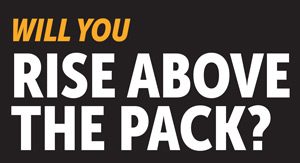You can be a positive or active bystander in many ways. If there’s a group of people telling sexist jokes or jokes that demean women: will you speak up and say you don’t want to hear it? If someone sends you emails or texts with content that demeans women: will you ask them to stop? If someone is drunk and can’t make their way home safely: will you make sure they get home safely? If you see a serious situation that looks like Police assistance is required: will you call the Police?
Being an active bystander doesn’t always mean confronting a perpetrator face to face. If there are safe and calm ways that you can address a perpetrator, you may choose to step in, but it’s important to remember bystander intervention is about improving the situation and this can include improving the situation in direct and indirect ways.
Regardless of which way you choose to be an active bystander there are 3 important rules:
Safe: Keep yourself and others safe. Assess the risk of direct intervention. If you are concerned for the safety of yourself or others, you can choose a more indirect form of being an active bystander. If you get involved in a situation that starts to feel unsafe try and get out of it and then reassess your options. Don’t be aggressive or violent. The purpose is to challenge unacceptable behaviour with acceptable behaviour.
Active: Do something. Focus on what you can do. Don’t talk yourself out of action by saying things like ‘what’s the point, it wont change anything’ or ‘someone else will do something about it’. Believe that you can influence others. Think about the most appropriate action to take.
Calm: Always stay calm and try to calm others. The less agitated people are the less likely things are to get out of control.
You can be a positive bystander with Direct or Indirect action.
Direct Action includes:
Name or acknowledge an offence
Name or identify inappropriate behaviour so it isn’t just glossed over or ignored.
Creates an opening for discussion.
Surface a concern before it becomes a bigger issue.
“I” statements
Three parts: 1. State your feelings, 2. Name the behaviour, 3. State how you want the person to respond. This focuses on your feelings rather than criticizing the other person.
Interrupt the behaviour
Protect someone from being hurt or offended and someone else from giving offense or harm.
Snaps someone out of their “sexist comfort zone.”
Allows a potential target to move away and/or to have other friends intervene.
- Example: Ask a man harassing a woman on the street for directions or the time.
Use body language to show disapproval
Communicate that the behaviour is unacceptable.
Sometimes a disapproving look can be simpler and more effective than words.
Use humour (with care)
Reduces the tension of an intervention and makes it easier for the person to hear you.
Do not undermine what you say with too much humour. Funny doesn’t mean unimportant.
Bring it Home
Prevents someone from distancing himself from the impact of his actions.
Prevents someone from dehumanizing his targets.
- Example: “What if someone said that to your girlfriend?”
Publicly support the victimised person
Focus on victim: ask “are you ok?”
For People You Know
Encourage dialogue
Ask why he said/did the inappropriate thing. Facilitate a discussion that allows them to express themselves, but also allows you to communicate your objections
We’re friends, right….?
Reframes the intervention as caring and less critical.
Group Intervention
There is safety and power in numbers.
Best used with someone who has a clear pattern of inappropriate behaviour where many examples can be presented as evidence of his problem.
Indirect Action includes:
Get Help
Get help from someone better placed to intervene. This could include the police, security, staff, manager, owner, friends of the people involved.
Privately support an aggrieved person
Help someone who has been hurt or offended.
Listen supportively. Provide information about resources available to the aggrieved person.
Report the incident
If the perpetrator is from an identifiable group (e.g. function, workplace, etc.) make a complaint about their behaviour.
Indirect strategies allow you to do something about a situation, without having to physically become involved in the situation as it happens.
Getting help from someone who might be more capable of intervening safely and effectively can be a great way to positively impact the situation. At times getting help from another person better suited to the task may be the most effective course of action because a staff member at a venue, for example, can ask people to leave if they are behaving inappropriately, which will have much more influence than if you are a patron and you are asking a stranger to stop a certain behaviour. In this situation it isn’t about passing the buck, it is about identifying who is best suited to the task.
You can support the woman who was harassed or assaulted. This means instead of just ignoring the whole situation you actually go up to the woman if you see something happen to her and check in with her. In some situations it might be saying ‘I hate it when guys catcall, are you alright’. Other times it might be asking a woman ‘Do you want me to call the police’. The point is that you let the woman know that what happened was not ok, and you support her as best you can. If she doesn’t want any help or tells you to go away, then you must respect her wishes.
If you see people doing something wrong and you know they belong to a certain a group, for example, a function group, report their behaviour to the appropriate person, like the function manager or the staff at the venue. This option is similar to get help, but at times making a complaint is more effective than asking for help. You can also make a report as a follow up action in addition to another option as reporting the situation can be a good way of holding people accountable for their actions.
Some of the barriers to being a positive bystander include the diffusion of responsibility – the belief that someone else will act; concern about the impact on your social status – that you will be ridiculed; that you will stand out – when you want to fit in with what might appear to be a ‘normal’ situation.
This campaign calls for people to challenge these barriers and is implicit in the name – Rise Above the Pack. It encourages people to step up and be willing to overcome those barriers.
Case study: During an ABC radio interview discussing this project, a caller rang in to share a story. He recalled being at a city bus stop at night when a car kept pulling up to the bus stop and the men inside the car were harassing a woman at the bus stop. The man at the bus stop walked over to the woman and said: “Hello Mary”. The car drove away. Her name was not Mary and he did not know her but he chose to intervene in the situation. He did not need to confront the perpetrator.
Why Rise Above the Pack?
Research consistently identifies the causal relationship between gender inequitable attitudes (including a belief in rigid and stereotypical gender roles), and violence supportive attitudes that lead to violence against women, both on an individual and community level. An active bystander can play a key role in challenging the social norms and attitudes that perpetuate gender inequality and violence supportive attitudes in the community, as well as take action to respond to or prevent an incident of violence against women.

